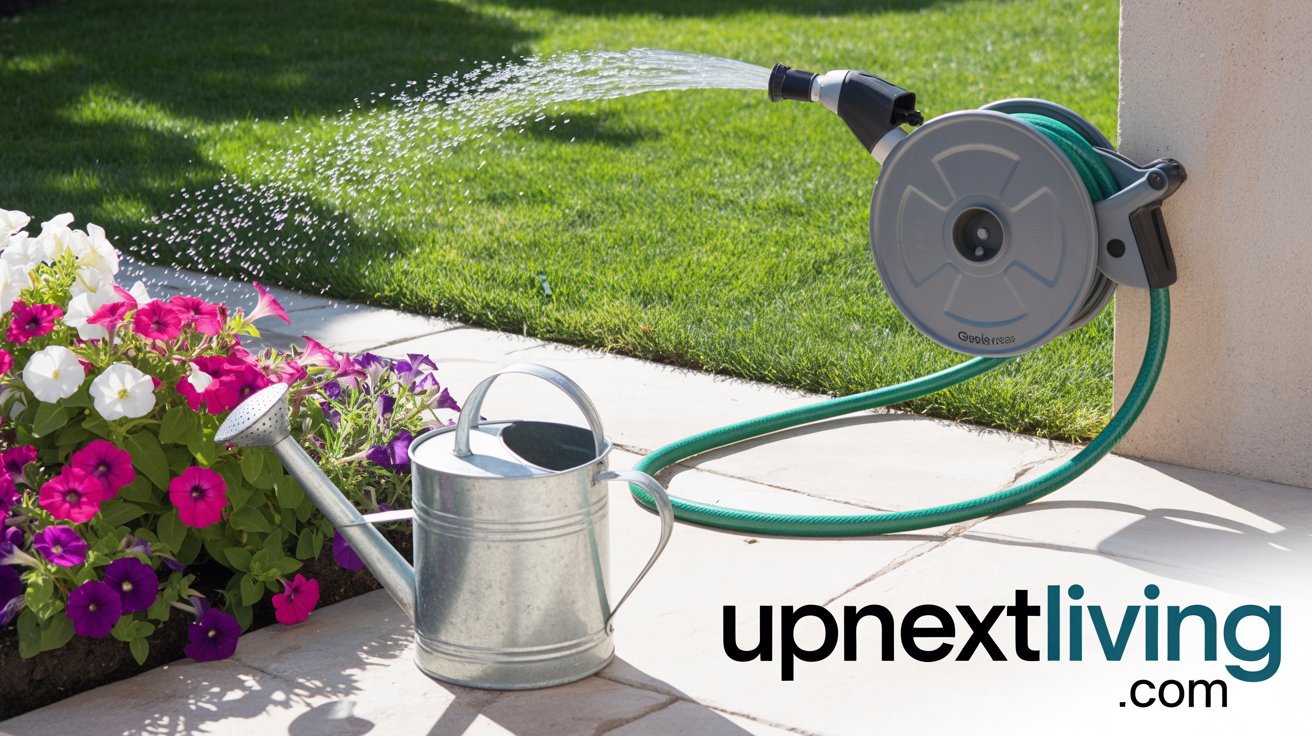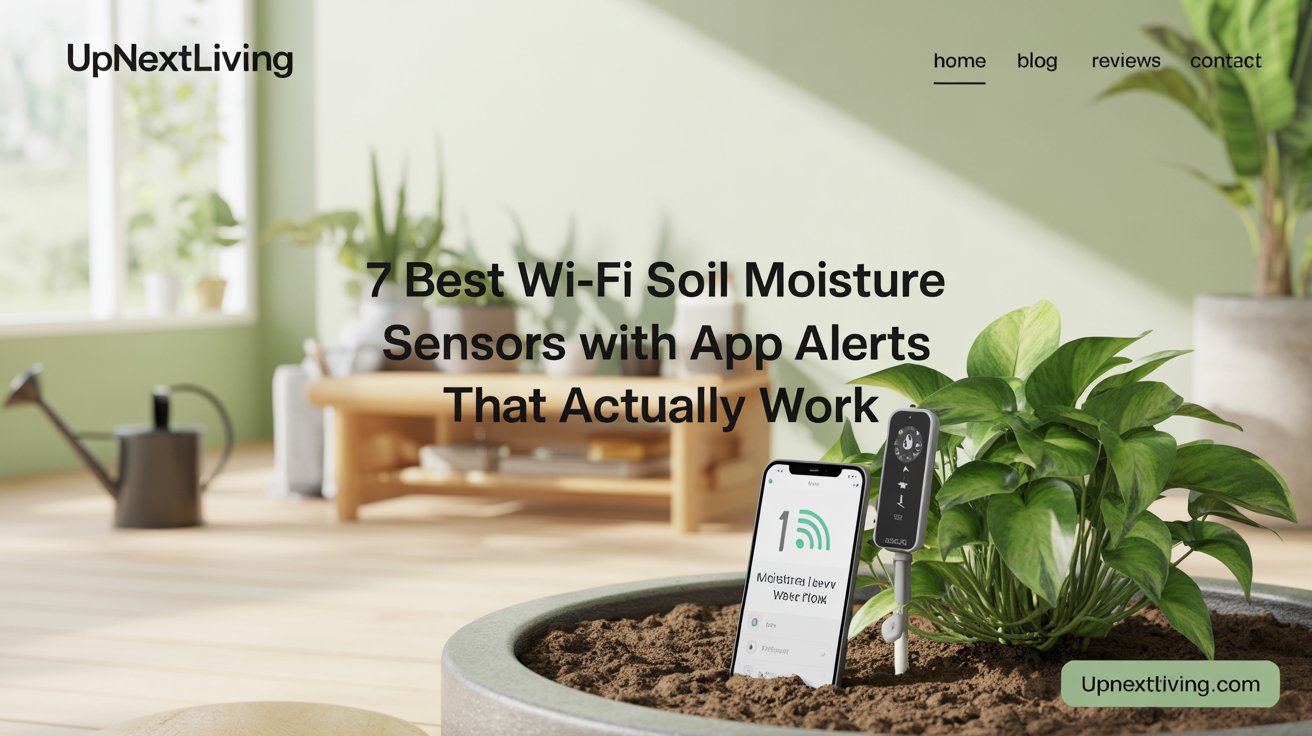How to Grow Lots of Herbs in a Small Space: Your Ultimate Guide (Indoors & Out!)

Dreaming of fresh basil for your pasta, homegrown mint for your mojitos, or fragrant rosemary for your roast, but think you don’t have the space? Think again! Growing lots of herbs in a small space is not only possible, it’s incredibly rewarding. Whether you have a tiny apartment balcony, a sunny windowsill, or just a spare corner, this guide unlocks creative ways to grow herbs in your house and maximize every inch.
Forget the sprawling estate garden – abundance thrives in the compact!
Why Grow Your Own Herb Garden? (Beyond Just Taste!)
- Instant Freshness: Snip exactly what you need, when you need it. Flavor explosion guaranteed!
- Serious Savings: Stop paying premium prices for those tiny plastic packs at the store.
- Space Efficiency: Herbs are perfect candidates for vertical gardening, windowsills, and containers.
- Health & Wellbeing: Know exactly what’s gone into your food (pesticide-free!).
- Sensory Joy: Enjoy the sights, smells, and textures of living greenery indoors.
- Beginner Friendly: Most herbs are forgiving and relatively easy to grow.
Choosing Your Herbal Allies: Best Starter Herbs
Q: What are some starter herbs for a herb garden? What are some good herbs for a small garden or container? What are your favorite herbs to grow?
Start with resilient, fast-growing, and frequently used varieties:
| Herb | Light Needs | Best For Small Spaces? | Key Characteristics |
|---|---|---|---|
| Basil | High | ✓ (Bush types) | Essential for pesto, loves warmth |
| Mint | Med-High | ✗ (Needs container) | Vigorous grower, perfect for drinks |
| Parsley | Med-High | ✓ | Biennial, flat-leaf has stronger flavor |
| Chives | Med-High | ✓ | Oniony flavor, pretty purple flowers |
| Thyme | High | ✓ | Drought-tolerant, great for roasting |
| Oregano | High | ✓ | Hardy perennial, Mediterranean staple |
| Cilantro | Med-High | ✓ | Grows fast, bolts in heat (succession sow) |
| Rosemary | High | ✓ (Dwarf types) | Woody perennial, needs good drainage |
| Sage | High | ✓ | Fuzzy leaves, perfect for poultry |
Pro Tip: Dwarf or compact varieties (like ‘Spicy Globe’ Basil or ‘Blue Boy’ Rosemary) are superstars for truly tiny spaces. My personal must-haves? Basil, chives, and thyme – endlessly useful!
Creative Small-Space Herb Garden Solutions (Indoor & Outdoor)
Q: What are some creative ways to grow herbs in your house? How do you grow herbs on a window sill? How to make a herb garden window? How to grow a herb garden in pots?
Think UP and Repurpose!
- The Classic Sunny Windowsill Garden:
- The Key: South or West-facing windows are ideal (6+ hours direct sun). Q: How close to a window? As close as physically possible! Inches matter.
- Creative Twist: Use tiered plant stands, wall-mounted shelves in front of the window, or hanging planters beside the window to maximize light capture on multiple levels. A dedicated “herb garden window” shelf is perfect.
- Vertical Power:
- Wall Planters & Pocket Systems: Fabric wall pockets (felt or canvas), recycled pallets turned vertical gardens, or modular plastic systems. Great for balconies, patios, or blank kitchen walls near light.
- Tiered Shelving: Use a simple bookshelf (near a window) or a dedicated plant stand. Group herbs with similar light/water needs on each tier.
- Hanging Baskets: Ideal for trailing herbs like oregano, thyme, or mint (contained!). Suspend from ceilings or hooks near windows.
- Repurposed Charm:
- Mason Jar Gardens: Drill drainage holes! Group jars on a tray near a window. Rustic and functional.
- Tin Can Brigade: Clean food cans, add holes, paint if desired. Perfect for small herbs like chives or thyme.
- Gutter Gardens: Mount old rain gutters horizontally on a fence or wall (outdoors or in a very sunny spot). Excellent drainage!
- Teacups & Mugs: Quirky homes for small herbs – ensure drainage (careful drilling or use as a cache pot).
- Over-the-Door Shoe Organizers: The clear pocket kind! Fill pockets with soil and plant. Hang on a sunny door or wall.
- Container Combos:
- Q: Can you grow flowers and herbs in the same pot? Yes! Choose companions with similar needs (e.g., lavender, marigolds, nasturtiums with sun-loving Mediterranean herbs). Avoid aggressive flowers.
- Q: Is it possible to plant cilantro and basil in the same pot? Generally yes, as both like moisture and sun. Basil might eventually overshadow cilantro. Q: Is it possible to plant mint in the same pot as other herbs? NO! Mint is incredibly invasive and will choke out others. Always grow mint alone in its own pot.
Location, Location, Location: Light is Non-Negotiable
Q: How close to a window does an herb garden need to be? Can you grow herbs inside with a grow light?
- Natural Light: Most culinary herbs demand bright, direct sunlight (6-8 hours). A south-facing window is gold. East or west can work for some (like mint, parsley). North windows are usually insufficient. Maximize light: Keep plants dust-free, use reflective surfaces (white walls, mirrors).
- Grow Lights are Game-Changers: Q: Can you grow herbs inside with a grow light? Absolutely! If natural light is weak (winter, dark apartment), invest in LED grow lights. Place lights just 6-12 inches above plants for 12-16 hours daily. This solves winter woes and lets you grow herbs anywhere!
Getting Started: Your Small-Space Herb Garden Journey
Q: How to start an indoor herb garden for under $100? How to start an herb garden in my backyard? How to plant a small herb garden? How to grow my own herbs?
- Gather Supplies (The $100 Challenge is Easy!):
- Containers: Get creative (see above!) or buy affordable pots (plastic, terracotta). Must have drainage holes!
- Potting Mix: Use a high-quality, well-draining potting mix (not garden soil). Add perlite for extra drainage if needed.
- Seeds or Seedlings: Seeds are cheaper but slower. Seedlings give instant gratification. Start with 3-5 favorites.
- Light Source: Sunny window or basic LED grow light ($20-40).
- Watering Can: Small one with a narrow spout.
- Optional: Small trowel, organic fertilizer (liquid seaweed/fish emulsion), plant labels.
- Planting:
- Fill containers with moistened potting mix.
- For seeds: Follow packet depth/spacing. Cover lightly.
- For seedlings: Gently loosen roots, plant at same depth as original pot.
- Water gently but thoroughly.
- Location: Place immediately in your chosen bright spot or under lights.
Keeping Your Mini Jungle Thriving: Maintenance Made Simple
Q: How to maintain a herb garden? How to keep my herb garden alive all winter? What is the best plant food for herbs?
- Water Wisely: Herbs generally hate soggy feet. Check soil moisture by sticking your finger in 1-2 inches. Water only when it feels dry. Water thoroughly until it runs out the drainage holes, then let drain completely.
- Feed Lightly: Herbs aren’t heavy feeders. Best plant food? Use a diluted, balanced organic liquid fertilizer (like fish emulsion or seaweed) every 2-4 weeks during active growth (spring/summer). Less is more!
- Pinch & Prune: Regularly pinch off the top growth (especially basil, mint) just above a leaf node. This encourages bushy growth and delays flowering (which often makes leaves bitter). Never take more than 1/3 of the plant at once. Harvest frequently!
- Winter Care (Indoors):
- Light: Crucial! Supplement with grow lights as daylight fades.
- Water: Reduce frequency as growth slows. Don’t let pots sit in water.
- Temperature: Most herbs prefer cooler temps (60-70°F) than summer. Avoid hot radiators or cold drafts. Q: What kitchen herbs can survive winter in Denmark? Indoors: Rosemary, thyme, sage, chives, bay laurel, parsley (biennial) can manage with good light. Mint and oregano often go dormant but regrow in spring.
- Pest Patrol: Inspect regularly (especially under leaves). Isolate infested plants. Use insecticidal soap or neem oil for aphids/spider mites. Good airflow helps prevent issues.
Harvesting & Enjoying the Bounty
Q: How long does it take to grow an indoor herb garden? What can you do with extra herbs from the garden?
- Harvest Time: From seed: 4-8+ weeks depending on herb. From seedlings: You can often start harvesting lightly within a week or two. Always harvest in the morning for best flavor.
- Using the Harvest: Snip fresh as needed! For extra herbs:
- Dry Them: Hang bunches upside down in a warm, dark, well-ventilated place, or use a dehydrator.
- Freeze Them: Chop herbs, mix with a little water or oil, and freeze in ice cube trays. Freeze whole leaves (like basil) on a tray first, then store in bags.
- Make Pesto/Sauces/Butters: Preserve large batches.
- Infuse Oils/Vinegars: Adds wonderful flavor.
- Share with Friends & Neighbors!
Your Small-Space Herb Garden Awaits!
Growing an abundance of herbs in a small space is a delightful, achievable adventure. Start small with a few pots on your sunniest windowsill or balcony. Experiment with vertical planters. Don’t be afraid to try creative ways to grow herbs in your house. Herbs are forgiving little plants that reward even the smallest efforts with incredible flavor and fragrance. How to grow lots of herbs in a small space? Just start! Grab a pot, some soil, and your favorite herb seeds or seedlings today. Your taste buds (and your wallet) will thank you.
- 🌿 Top 7 Best Garden Hose Reels of 2025 (Tested & Reviewed!)
- “7 Best Wi-Fi Soil Moisture Sensors with App Alerts on Amazon That Actually Work (2025)”
- ⚡ Powering Progress: How AI is Revolutionizing Industry Innovation & Infrastructure in 2025
- 🤖 Next-Level Living: 13 Incredible Smart Home Devices for 2025
- ♥ 7 Heartfelt Ways to Keep a Simple (& Sane!) Home with Kids



